If I were the NewGuy at Turkey Camp Part 3
I’ve talked about the kit. Now, I am going to put it all together and talk you through what to expect.
First off, let me tell you what does not work. If you’re a beginner, you read a lot about master turkey hunter tactics like Run & Gun. Forget it. You are not going to be Runnin’ and Gunnin’ at our turkey camp. The reason is simple: It’s about a 15-minute walk from the house to the back of the property. You run out of room in the first half-hour. A lot of turkey hunters are mobile. We are not.
Your butt is going to get a good workout at our camp. You will learn to be patient. The turkeys will come to you, but maybe not right away. This is hard-won knowledge. I went several years chasing birds and did so mostly fruitlessly. The way to be successful is to find the spots where the odds are stacked in your favor. Don’t go tromping through the forest thinking you will outwit the birds.
Turkeys are creatures of habit. They are also creatures of structure. Think of bass fishing. You find a largemouth bass by fishing the structure that he likes to inhabit. He likes the edges of things. He likes drop-offs, and holes and bars and weed beds. Start thinking like that, and you will find turkeys.
Also understand a basic guiding principle. The longer you hunt the same piece of property you begin to see that the same sort of bird will interact with the same sort of structure in roughly the same way. I have been watching the birds on my property for 20 seasons. I have watched multiple generations. It has gotten to the point where I talk about gobblers like Mister Natural or the Garbage Pit Bandit, or The Virginia Creeper as if they are the same bird, even though the stories about them now stretch decades. The point is that they are different birds whose ostensible personalities seem to be molded by the landscape. These birds have been doing the same thing for as long as I have been on the property, and they were probably doing it for many generations previously.
Another thing to remember is that we started on the property not knowing any of this. Part of the learning experience was finding that we were putting our butts down against the same tree trunks year after year. These are honey holes we have found that afford us good natural cover and give us an advantage when we hunt them. There is no rule that says: you must hunt from this tree. However, if you go off on your own, you probably won’t have as good luck. How this nets out into a practical hunting strategy is that we can show you good spots to go. Once you’re there, stay put and don’t overcall. The turkeys will eventually come.
Could you Run & Gun? Yes, but this is only 200 acres. If you go tromping around the property, you’ll likely piss off the birds and not see anything. This is a 4-week chess match against opponents that have brains smaller than a peanut. I promise you that you will walk away frustrated. Tactically, it is more like a knife fight in the dark than a well-run exercise. We only have so many turkeys and so many gobblers. Once they’re wounded, dead, or frightened off, that’s it until next year.
Every year, I have hunters that skirt my property lines and call loudly, thinking they might draw a bird off my land. I can hear them. They are exquisitely loud and sound more like a turkey than a real turkey. What they mostly do is scare the already hinky birds into the center of my property.
Here are some things I used to think before I set foot on the property:
- Turkeys like to go to water first thing. Nope. I hunted the creek bottoms for several seasons. I found that the turkeys were always above me, and I would spend my mornings chasing them up the hill. I finally learned to stay up on top of the ridges
- Turkeys are best hunted coming off the roost. I tried that for years. When it didn’t work, I would give up. I did not become a consistently successful turkey hunter until I gave up hunting flydown and stayed well back from the roost. The turkeys fly down, gather themselves and eventually work themselves up onto the top of the ridge to feed. I now start at the top of the ridge and wait for them. That is not to say: Don’t Hunt Flydown. Just don’t get yourself 20 yards from the roost tree and expect them to flop down at your feet. A little tree calling at sun rise does an amazing amount of work even at 200 yards distance. Since I’ve relaxed on my flydown calling, I’ve picked up more and more birds at flydown.
- Afternoon hunting is useless. This is what Ben Lee used to call False Hearsay. I grew up with it, because Ohio only allowed turkey hunting until Noon. Some states still do. The fact of the matter is that turkeys are huntable until they go to roost in the evening. One of my best tactics is to go somewhere and hang out all afternoon. Yelp loudly every half-hour or so. It may take a gobbler 3 hours or more to come to find you, but he will
- If a gobbler hangs upon you and you can’t get him to return your call, you’re screwed. The fact is that gobblers can answer you lustfully at 0700 and not show up until 1100. They had other stuff to do– maybe dry cleaning and the post office– I don’t know. Don’t give up.
- Turkey Hunting is Intense. Yes, it can be intense, but there it ain’t like TV. Bring a book. Learn to take naps in the blind. Turkey hunting is more like the “stakeout” on the cop shows than anything to do with the hunts you see on TV and Youtube.
- It’s all about calling. No. Emphatically no. That is one reason I stopped wearing a vest, because it encouraged too may calls choices and too much calling. I pick just a few calls and then use them sparingly. The last thing you want to do is open your Kimono on The Opener and give the gobblers everything you have. Remember that on 200 acres, the gobblers can probably hear you across the length and breadth of the property even if you cannot hear them. Learn to manage your calling so you have something new and exciting to give the gobbler that needs it.
You will hunt with one of us before we turn you loose. It may be a successful hunt. It may not, but we’ll try and give you as much knowledge as we can. You will be exposed to birds that want to party. I would suggest listening to my podcasts. This one, in particular, will give you some thoughts that you won’t hear anywhere else:
Having gotten all that off my chest, let me boil down turkey hunting to a basic kernel of truth. Turkeys breed in the spring. The way a gobbler and a hen hook up is through calling. If you call successfully to a gobbler, he will come to you. You shoot him. You go home happy, having succeeded in accomplishing the hardest hunt on the North American Continent.
There are some subtleties to this that bear scrutiny. The first is that in order to call successfully to a gobbler, you have to get inside that bird’s head and understand his basic motivations. Most other game does not require this much intimacy. This requires it in the extreme. You need to learn to think like the bird you are hunting to the point where you can pitch woo to a gobbler. The second subtlety is that gobblers and hens normally interact in a way where the gobbler gobbles and the hen comes to him to breed. His calling and his visual display turns her on, and causes her to present herself to himself in a very specific way. The gobbler, seeing this breeding posture goes over and does his thing, and this is how turkeys are made.
You have to turn that instinctual pattern on its head. You have to make the gobbler come to the hen. You have to defeat Nature’s way of doing things and make the gobbler come running. If you call too little, the gobbler will think you are uninterested. Your calling has to match a pattern that is etched in that little pea-sized brain. If you call too much, the gobbler will assume you are on your way, and he will break into a strut and wait for his new girlfriend to arrive. Somehow you have to convince him that the noises you are making are a hen that really wants to breed, but is somehow prevented from doing so. He needs to come just a bit closer, and then a bit closer still, and then closer still until. . . sometimes this dance can go on for hours and the gobbler is going to be covering hundreds of yards. Sometimes you fart at at sunrise, and the gobbler flies down off his roost and comes at the run, begging to be shot. You also never know which kind of hunt it is going to be.
Also remember that these birds have been dancing this dance for millions of years and that what you are hunting is related to a branch of the dinosaurs, that have not been around for 63 million years. It is hardwired into their systems and somehow you’ve got to hack into that programming and twist it to your own ends. This is why they call it the hardest game on the North American Continent.
Here’s the last installment of the series:
This post has already been read 952 times!
Views: 5
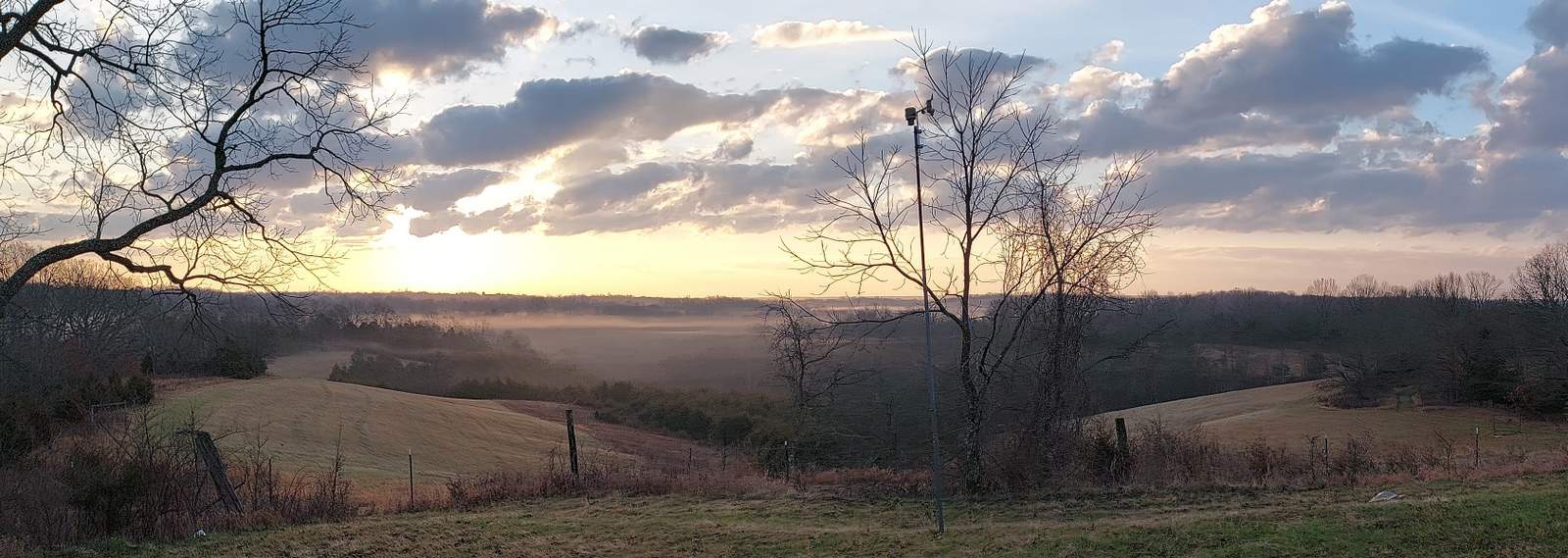

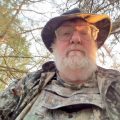
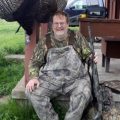
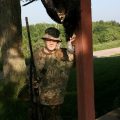


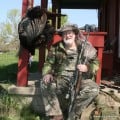

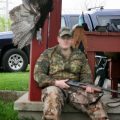
Comments
If I were the NewGuy at Turkey Camp Part 3 — No Comments
HTML tags allowed in your comment: <a href="" title=""> <abbr title=""> <acronym title=""> <b> <blockquote cite=""> <cite> <code> <del datetime=""> <em> <i> <q cite=""> <s> <strike> <strong>